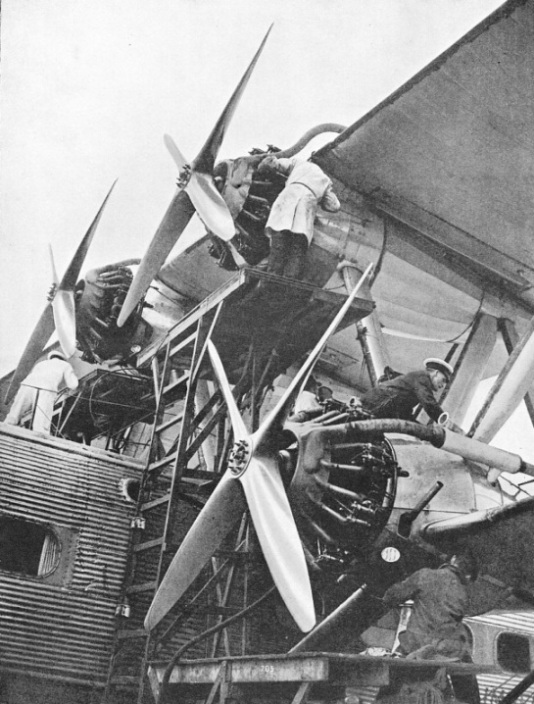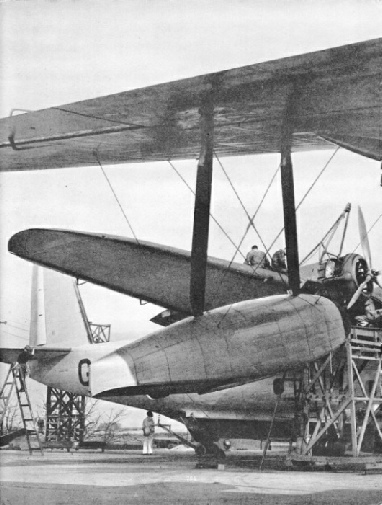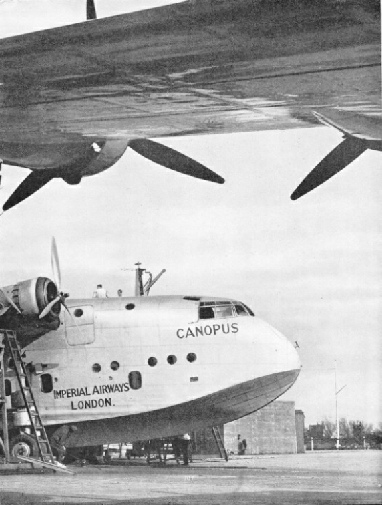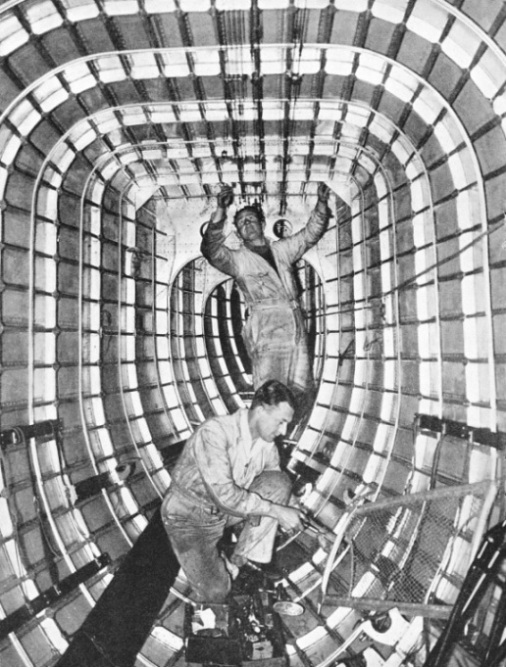
© Wonders of World Aviation 2015-


Part 26
Part 26 of Wonders of World Aviation was published on Tuesday 30th August 1938, price 7d.
This part included a central photogravure supplement further illustrating the article on Aircraft Maintenance.
The Cover
Our cover picture this week shows the tailless Pterodactyl aeroplane undergoing tests at Yeovil, Somerset. This design, invented by Captain G. T. R. Hill, was evolved to give better stability than is inherent in the standard type of aeroplane and to avoid the dangers of stalling.
This illustration was later used as the colour plate in Part 39, forming part of the article on Unconventional Aircraft.
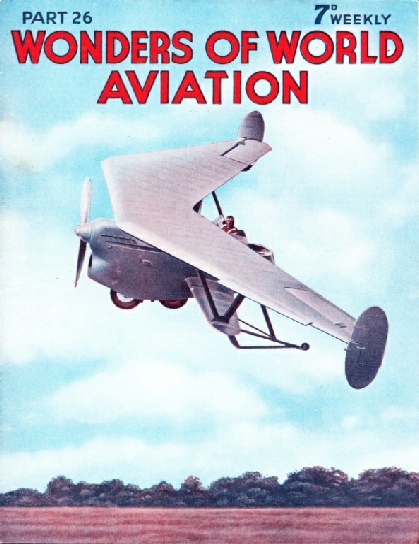
Contents of Part 26
Some Famous Air Trophies (Part 2)
There are still many valuable trophies to be won by the modern flying man. This chapter describes some of the stories of some famous air trophies. The article is concluded from part 25.
Reaction Propulsion
The development of modern heavier-than-air machines shows a constant progress towards ever greater speeds and higher altitudes. Travel in these highly rarefied regions would necessitate the expenditure of but a fraction of the power required to overcome the resistance offered by the denser air at the lower levels. This chapter describes the means by which aircraft propelled by rockets may one day solve the problems of stratosphere flight.
The Chilton Single-Seater
It is the high performance of the Chilton light monoplane that makes it an essentially useful aircraft, apart from the economy of its maintenance and running costs. The object behind the Chilton monoplane,which can correctly be called an ultra-light aircraft, was to design what the makers described as “a real aeroplane in miniature”. This chapter describes the Chilton single-seater, an economical, high-performance monoplane powered by a converted motor-car engine.
Aircraft Maintenance
The maintenance of the flying boats and landplanes of Imperial Airways’ large fleet is one of the most important sections of the company’s activities. Upon the efficiency of the personnel who take over each aircraft when it lands on an aerodrome or touches down on the water depends the reliability of every machine and of every instrument and item of its equipment. The organization of the maintenance facilities along the two trunk routes demands a high standard of reliability. This chapter describes how the aeroplane fleet of Imperial Airways is kept in first-class condition.
Aircraft Maintenance
Photogravure Supplement
THE OVERHAUL OF A LANDPLANE used by Imperial Airways is carried out in hangars at Croydon Airport. One hangar is devoted to complete overhauls and another to maintenance work. The engines for landplanes and flying boats all receive their complete overhauls at Croydon
Aircraft Maintenance
Photogravure Supplement - 3
EVERY INCH OF THE HULL IS CAREFULLY SCRUTINIZED when a flying boat is overhauled. This scrutiny is conducted from inside and also from outside. Each rivet has to be checked for tightness and the exterior is examined minutely for dents or scratches that might have removed the protective covering of the metal. This covering prevents corrosion, which would otherwise occur rapidly due to the effects of salt water and air.
Aircraft Maintenance Photogravure Supplement - 2
THREE PAIRS OF WHEELS are attached to the hull of a flying boat to enable the aircraft to be pulled out of the water and up the slipway. Two of these pairs are arranged, one on either side of the hull, by means of anchoring points on the hull and wings; the third pair of wheels is fixed by a cradle to the back end of the hull. These back wheels can be steered to enable the flying boat to be manoeuvred into any position.
James Allan Mollison
James Mollison is one of the most remarkable personalities in modern aviation. From the beginning of his career, when he was, at eighteen years of age, the youngest officer in the Royal Air Force, he has known the extremes of triumph and disappointment. Some of his flying records have given way to the inevitable march of progress, but his place in the history of aviation is secure if only for his having been the first man to fly solo across the North Atlantic westward from England, and for his having been the first to fly the South Atlantic. This chapter describes the many records broken by Mollison during his long-distance flights over land and sea.
This is the twelfth in the series on Makers of Air History.
The Handley Page 42
The Handley Page 42 type of air liner is one of the most remarkable in the world. Eight of these machines were ordered by Imperial Airways and in June 1931 the first began flying between London and Paris. This article describes this air liner which set a new standard of comfort and safety during flight.
This is the first article in the series on Famous Aircraft.
The Mercedes-Benz
The Mercedes-Benz diesel and petrol engines are notable examples of modern high-power engines. Two models, the 1,200 horse-power DB 602 diesel and the petrol engine DB 600, rated at 950-1,000 horse-power, are especially esteemed. The petrol engines is fitted to a number of Germany’s newest and fastest aeroplanes.
This is the fourth article in the series Modern Aero Engines.
Great Air Experiments (Part 1)
Among other things, this chapter gives some interesting details of experiments which have become familiar features of present-day flying. It has been wrongly stated that the Short-Mayo composite aircraft is not so novel an idea as it has been made out to be. Among the other experiments dealt with in this chapter are those connected with attempts to solve the problem of landing an aeroplane within a restricted area, slow flying tests, tests with the free parachute and experiments with the free parachute. This chapter is concluded in part 27.
